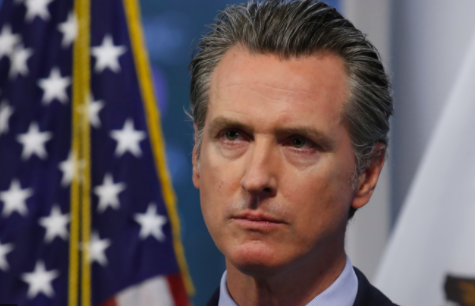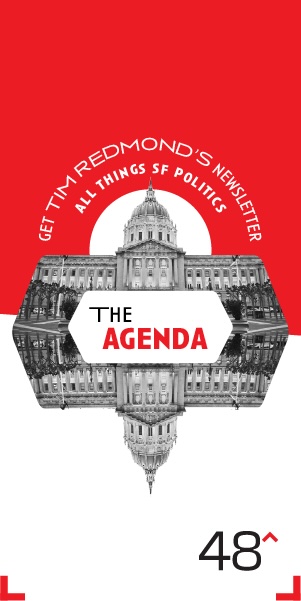On the surface, the nightmare that is the federal crackdown on Laguna Honda Hospital appears to be a failure by San Francisco to address some problems at the legendary hospital and some bureaucratic tangles at the federal level that are preventing the city from fixing the problems.
Now the feds have given San Francisco another two months before the hospital has to shut down, sending some 700 people, mostly seniors with serious medical issues, out onto the streets.

That’s not an exaggeration: There is literally nowhere for many of these patients to go. Nowhere in California are there 700 skilled nursing beds for people on Medicare. Transferring these patients out will mean a lot of them, maybe most of them, will die.
All over some rather minor problems that can easily happen in any institution of this size and scope: Some folks smuggled in drugs. Somebody was smoking while on oxygen.
None of the problems involved a systemic lack of care, which for most residents of the hospital is not only exceptional but essential.
Again: Because the feds are making an issue of real, but not critical problems, hundreds of people could die.
From a lawsuit filed by former City Attorney Louise Renne:
When can the hospital be recertified? Will the hospital remain empty in the meantime? Can its former residents move back? If so, how and under what circumstances? These questions are unanswered. In the meantime, relocation strikes terror in the hearts of the residents and their families as they face the prospect of eviction. Where will they go? Will their new facility be equipped to treat them? Will families be able to continue to visit? As it is, Laguna Honda represents the bulk of the available skilled nursing beds in San Francisco. There are few, if any, other alternatives in the Bay Area or even the State of California. To add to the urgency, most private facilities limit available beds for the poor, preferring a wealthier clientele. The isolated deficiencies at Laguna Honda that led CMS to impose closure and relocation involved a small fraction of patients and were correctable. There is an array of remedies that CMS could have invoked to address those alleged violations which would not cause the vast displacement of poor and fragile people. In short, the draconian actions by CMS and the State are illegal, unnecessary, and cruel.
So here’s where I stop and think about the politics of the situation. This is completely unnecessary—and could have been resolved way before it got to this point if the governor of California, who was once the mayor of San Francisco, had been paying attention or cared.
Help us save local journalism!
Every tax-deductible donation helps us grow to cover the issues that mean the most to our community. Become a 48 Hills Hero and support the only daily progressive news source in the Bay Area.
Gavin Newsom is now getting involved, I am told, and he is blaming the situation on the Secretary of Health and Human Services, Xavier Becerra, who has the final authority here.
Newsom has known Becerra for many years. I suspect he has the guy’s cell phone number.
I am told that there’s talk of a summit, that Vice President Kamala Harris, who also used to be a San Francisco elected official, might get involved. Good for all of them.
But let’s go back to the start.
This all happened because the California Department of Public Health, under Newsom appointee Tomas Aragon, who used to work for the SF Department of Public Health, decided to go after Laguna Honda.
From the lawsuit:
From October 2021 to April 2022, CDPH conducted six abbreviated surveys of Laguna Honda. Based on these surveys, CDPH alleged a series of deficiencies, most of which were self-reported by Laguna Honda and commonly occur at other SNFs. The alleged deficiencies included 13 residents testing positive for non-prescribed substances; 23 residents possessing “contraband” [a pocket knife, scissors, smoking gear, and some alcoholic beverages] and 11 residents possessing lighters. The deficiencies identified could be reasonably anticipated at a large SNF that cares for many residents with substance abuse disorders in the middle of a large city. Laguna Honda also must comply with the Patients’ Bill of Rights, which provides patients a reasonable expectation of privacy in their rooms, the right to receive unopened mail, and to freely come and go from Laguna Honda (with some restrictions) whether on a pass or against medical advice. Upon investigation, Laguna Honda found that residents were obtaining “contraband” when they left the facility despite staff’s extraordinary efforts to identify and confiscate substances and contraband from patients and their visitors entering the facility, while respecting their privacy rights. Promptly after receiving each of CDPH’s notices of deficiencies, Laguna Honda developed and submitted detailed Plans of Correction to address and prevent further problems. Collectively, Laguna Honda’s Plans of Correction set forth almost 120 corrective actions it would take or had already taken to address the alleged deficiencies CDPH identified. The plans listed the persons responsible for taking each of those actions, the completion date of those actions, and ongoing actions Laguna Honda would take to prevent future deficiencies. The corrective actions included clinical searches to confiscate contraband; the creation of a facility-wide system for the handling and disposition of contraband including a new tracking procedure; a new monitoring assessment for residents coming and going from the hospital; stationing deputy sheriffs at the facility to prevent, identify, and respond to the use of contraband by residents; installation of prescreening technology at facility entry points; additional screening of patients with histories of substance abuse disorders; and much more.
The problems at Laguna Honda were self-reported. They didn’t involve patient care.
Part of what’s going on is that the city put some folks in the hospital who were younger and had substance-abuse issues—because there was nowhere else for those patients to go except the streets. And some of them smuggled in drugs.
Not saying this is great, but it doesn’t rise to the level of putting 700 vulnerable people at risk of dying.
Some critics say Laguna Honda should be limited to the elderly and seriously disabled, and that the population the city moved in should never have been there. Let’s discuss that. But there is no indication that the existing patients were at risk of anything as serious as the risk of death that is part of discharge or relocation.
So here’s the question:
Why didn’t Newsom call Aragon and ask him to work with the city? Did they not realize the impact of their actions? Why did he let this go on so long before he called Becerra? Why were patients terrorized by a process that was cruel, unusual, and never needed to happen?
Laguna Honda can’t close. Not unless the city, state, and feds are ready to let hundreds of seniors and disabled people die, now and in the future. The city can and will fix these problems.
So why is this happening, when the governor could have stopped it months ago?
I know you’re busy, Gav. But now you have a serious crisis, when you could have avoided it with a little leadership.




